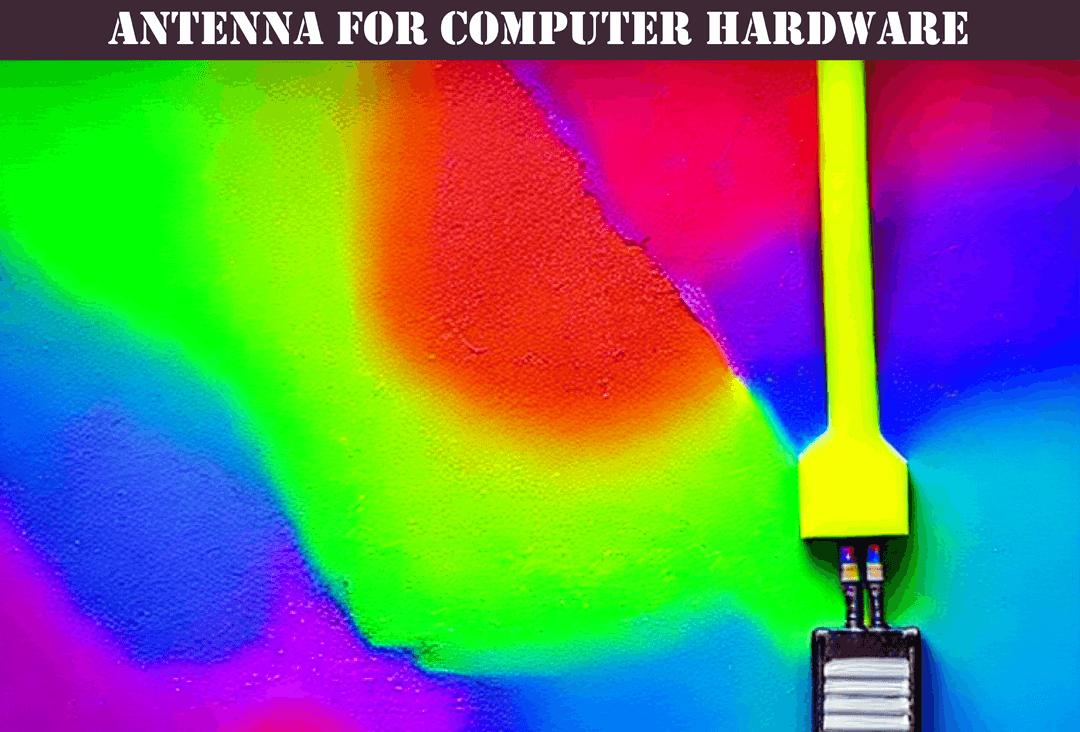Overview Of Antenna For Computer Hardware

Antennas are a crucial component of modern computer hardware, enabling wireless communication between devices and networks. They are responsible for transmitting and receiving radio signals, which carry data and information across the airwaves. Antennas have come a long way since their inception in the 19th century, evolving from simple wire antennas to complex designs that can support high-speed data transfer and long-range communication.
In this essay, we will explore the fundamentals and basics of antennas for computer hardware. We will begin by discussing the principles of antenna operation, including radiation, frequency, and polarization. We will also examine the different types of antennas used in computer hardware, including directional and omnidirectional antennas, and the frequency bands they support.

1 Hour Consult $250
IT Glue Based Documentation
Concentrated 1 hour session of MSP documentation wisdom.
Count Me InUnderstanding the fundamentals and basics of antennas is essential for selecting the appropriate antenna for a given application, optimizing performance, and troubleshooting common problems. Factors that affect antenna performance include antenna gain, impedance matching, and radiation pattern. By understanding these factors, users can select the right antenna for their needs and optimize performance for reliable wireless communication.
In this essay, we will also discuss how to choose the appropriate antenna for a specific application, as well as tips for installation and maintenance to maximize performance. By doing so, we can ensure that our computer hardware is working efficiently and effectively, enabling us to take full advantage of the benefits of wireless communication.
As the world becomes increasingly reliant on wireless communication, antennas will continue to play a critical role in computer hardware. Advances in antenna technology are making it possible to support high-speed data transfer, longer-range communication, and more complex networks. Understanding the fundamentals and basics of antennas for computer hardware is essential for staying current with the latest technology and taking advantage of its benefits.
In the next section, we will discuss the principles of antenna operation, including radiation, frequency, and polarization. By understanding these principles, we can better appreciate how antennas work and select the appropriate antenna for our needs.
Principles of Antenna Operation
Antennas operate by converting electrical signals into electromagnetic waves that can propagate through the air. These waves carry information and data and are used for wireless communication between devices and networks. To understand how antennas work, we need to understand some basic principles of antenna operation.
Radiation
Antennas operate by radiating electromagnetic waves into the surrounding space. This radiation can be either omni-directional or directional, depending on the design of the antenna. Omni-directional antennas radiate energy uniformly in all directions, while directional antennas focus energy in a specific direction.
Frequency
Antennas are designed to operate within specific frequency ranges. The frequency of an electromagnetic wave is the number of cycles per second, measured in Hertz (Hz). Different applications require different frequency ranges, depending on factors such as data rate, range, and interference. Common frequency bands used in wireless communication include 2.4 GHz, 5 GHz, and 6 GHz.
Polarization
The polarization of an electromagnetic wave refers to the orientation of its electric field. Antennas can be designed to transmit and receive waves with different polarization orientations, such as horizontal, vertical, or circular. The polarization of an antenna can affect its performance in certain applications, such as in environments with high levels of interference.
Types of Antennas
There are various types of antennas used in computer hardware, each with its own unique design and characteristics. Understanding the different types of antennas can help users select the appropriate antenna for their needs.
Directional Antennas
Directional antennas are designed to focus energy in a specific direction. They can be useful for long-range communication, as they can achieve greater distances than omnidirectional antennas. However, directional antennas need to be precisely aimed at the target device or network, making them less suitable for applications that require mobility or changing directions frequently.
Omnidirectional Antennas
Omnidirectional antennas radiate energy uniformly in all directions. They are typically used for short-range communication and are suitable for applications that require mobility or changing directions frequently. However, their coverage area is limited compared to directional antennas.
Yagi Antennas
Yagi antennas are directional antennas that are commonly used for point-to-point communication over long distances. They consist of a dipole antenna and a number of parasitic elements that focus energy in a specific direction. Yagi antennas are popular for outdoor use in environments where line-of-sight communication is possible.
Parabolic Dish Antennas
Parabolic dish antennas are highly directional antennas that are used for long-range communication. They consist of a large dish-shaped reflector that focuses energy onto a smaller antenna located at the focal point. Parabolic dish antennas can achieve greater distances than other types of antennas, but they require precise aiming and are not suitable for applications that require mobility or changing directions frequently.
Frequency Bands and Antenna Selection
Different frequency bands are used in wireless communication, and each frequency band requires a different type of antenna. Understanding the frequency bands and their corresponding antennas is essential for selecting the appropriate antenna for a specific application.
2.4 GHz
The 2.4 GHz frequency band is one of the most commonly used bands in wireless communication. It is used for Wi-Fi, Bluetooth, and other short-range communication applications. The antennas used for 2.4 GHz communication are typically omnidirectional or directional.
5 GHz Frequency Band and Antenna Selection
The 5 GHz frequency band is commonly used for high-speed wireless communication, such as Wi-Fi 5 and Wi-Fi 6. Antennas used for 5 GHz communication are typically directional, as they can achieve greater distances than omnidirectional antennas.
Patch Antennas
Patch antennas are commonly used for 5 GHz communication. They are directional antennas that are relatively small and lightweight, making them suitable for mobile devices and indoor use. Patch antennas can achieve high gain and provide good coverage over a narrow beamwidth.
Panel Antennas
Panel antennas are another type of directional antenna used for 5 GHz communication. They consist of a flat panel with an array of dipoles or microstrip patches, and they can provide high gain and narrow beamwidth. Panel antennas are commonly used for outdoor point-to-point communication.
Sector Antennas
Sector antennas are directional antennas that are designed to cover a specific sector of space. They consist of multiple dipole or patch elements arranged in a circular or semicircular pattern. Sector antennas can provide high gain and coverage over a wide beamwidth, making them suitable for outdoor wireless networks.
Dual-Band Antennas
Dual-band antennas are designed to operate on both 2.4 GHz and 5 GHz frequency bands. They can be either omnidirectional or directional, depending on the application. Dual-band antennas can be useful for devices that need to switch between different frequency bands, such as smartphones and tablets.
Conclusion
Antennas are a fundamental component of wireless communication systems for computer hardware. They enable devices to transmit and receive signals wirelessly, which is essential for modern technology such as smartphones, laptops, and Wi-Fi routers.
In this essay, we have explored the basics of antenna operation, including polarization, frequency range, and directional characteristics. We have also discussed the various types of antennas, including omnidirectional antennas, directional antennas, and patch antennas, and their applications in different scenarios.
When selecting an antenna, it is important to consider the specific requirements of the application. For example, an omnidirectional antenna may be suitable for indoor use or for devices that require constant mobility, while directional antennas may be preferred for outdoor communication or for long-range point-to-point links.
It is also important to keep in mind that the performance of an antenna is affected by its environment, such as nearby obstructions or interference. Therefore, proper installation and positioning of the antenna can significantly impact its effectiveness.
In conclusion, understanding the fundamentals of antennas and selecting the appropriate type for a particular application is crucial for achieving optimal wireless communication performance. As technology continues to advance and wireless communication becomes increasingly prevalent, the role of antennas in computer hardware will only become more significant.
FAQ
Q: What is the purpose of an antenna in computer hardware? A: The purpose of an antenna is to enable wireless communication between devices. It allows devices to transmit and receive signals wirelessly, which is essential for modern technology such as smartphones, laptops, and Wi-Fi routers.
Q: What are the different types of antennas? A: There are various types of antennas, including omnidirectional antennas, directional antennas, patch antennas, and dual-band antennas. Each type of antenna has different characteristics and applications.
Q: What factors should be considered when selecting an antenna? A: Factors such as frequency range, polarization, and directional characteristics should be considered when selecting an antenna. It is also important to consider the specific requirements of the application, such as the need for mobility or long-range communication.
Q: Can antennas be affected by their environment? A: Yes, the performance of an antenna can be affected by its environment. Nearby obstructions or interference can impact its effectiveness. Proper installation and positioning of the antenna can help mitigate these effects.
Q: What are some common applications for different types of antennas? A: Omnidirectional antennas are commonly used for indoor wireless networks and mobile devices, while directional antennas are preferred for outdoor communication or long-range point-to-point links. Patch antennas are often used for 5 GHz communication, and dual-band antennas can be useful for devices that need to switch between different frequency bands.